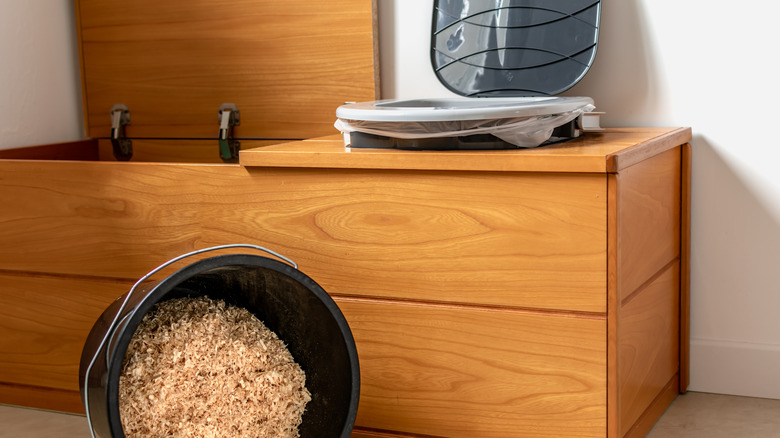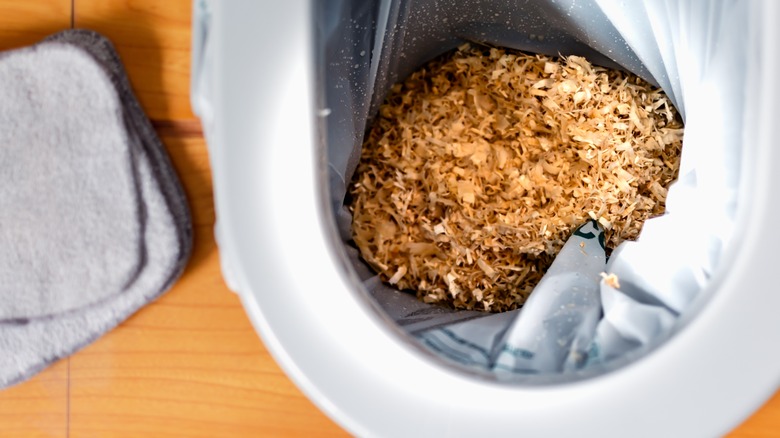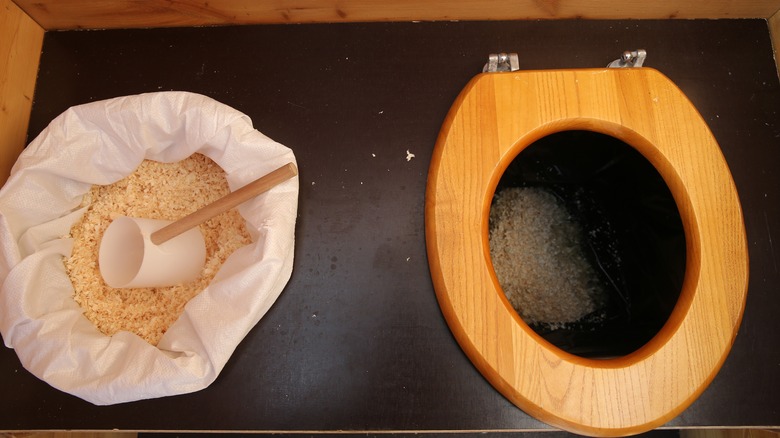Why Compost Toilets Are The Perfect Choice For Tiny Home Bathrooms
Tiny homes are the epitome of sustainable, eco-friendly living. They take up little space, need few materials to build, and leave less of a carbon footprint since there's less floor area to cover with heaters or air conditioners. But there's a small issue with tiny home ownership — choosing a toilet that works. If you're looking at ways to maximize the small space of a tiny home, a flush toilet just doesn't make sense. Given these homes' small nature, it's not always easy to outfit them with the plumbing systems needed to keep a flush toilet operational. Crucially, the remote locations where many tiny homes are found often lack municipal sewage connections or even septic waste systems. With these constraints, compost toilets emerge as the perfect option for answering the calls of nature.
Composting toilets work by separating liquid and solid waste, then storing the former and biodegrading the latter. They don't need any plumbing connections or chemicals to operate. In fact, compost toilets don't even need water, so there's one less factor to drive up the cost of tiny home living. All the processes happen thanks to the waste your body produces, with the help of a bit of carbon-rich litter material. In the end, you're left with excellent compost and fertilizer for your plants. That's as sustainable as going to the loo can get. Below, you'll learn how compost toilets work and what it takes to maintain them in a tiny home.
What compost toilets are and how they work
To help you understand what compost toilets are and how they work, let's review the key components that make up this toilet type. First, there's the urine separator. This part separates urine from solid waste and diverts it to a special canister. Then, there's the solids container — this is the receptacle that holds the feces. Finally, the contraption usually has a toilet seat, and a storage for carbon-laden substances like peat moss, coconut coir, or saw dust.
Here's how these components work together. When you go to the bathroom, the urine separator channels urine out of the solids container and into its own canister. Believe it or not, this step helps prevent the buildup of nasty odor. Meanwhile, the solids container collects the poop. When you're done, throw some of the litter material down into the solids container, and the carbon-rich substance will do two things. Firstly, it will dry the feces, thus eliminating their smell. Second, they will help the solid waste break down into compost in a process that may take up to three weeks. When either of the reservoirs is full with waste, you can dispose of them separately. The urine can be flushed away into a public toilet or used as plant fertilizer. The composting solid waste can be added to your compost — or, you can treat it as you would a dirty diaper or dog poop and throw it into the garbage bin.
How to maintain a compost toilet in a tiny home
Since compost toilets collect human waste, they demand a bit of maintenance. Without frequent upkeep, they may lose their efficiency, start to emit unpleasant odors, or even break. You should be aware of these maintenance requirements before getting one of these toilets for your tiny home.
An essential aspect of compost toilet maintenance is to not postpone routine cleaning tasks, like wiping the toilet, emptying the liquid and solid waste compartments, disinfecting surfaces, or cleaning the fan. Failing to clean the urine canister is a particularly egregious mishap that will punish you with a nasty smell whenever you do get around to cleaning the part. That's because urine begins to decompose after sitting in the canister (or the insides of the separator), and this decomposition releases an odor. It's equally important to check the urine diverter for wear and tear whenever you clean it, as small cracks can let the urine leak out. Cleaning the solids chamber is also a must once you've emptied it. However, you should only use natural, sustainable cleaners for this purpose to avoid killing the bacteria that aids the composting process.


